Innovative Storytelling Practices to Engage New Audiences
 Working paper co-published by the Shorenstein Center on Media, Politics and Public Policy at the Harvard Kennedy School and Northeastern University’s School of Journalism.
Working paper co-published by the Shorenstein Center on Media, Politics and Public Policy at the Harvard Kennedy School and Northeastern University’s School of Journalism.
This research was supported by the Stanton Foundation.
Mike Beaudet is a professor of the practice at Northeastern University School of Journalism and an investigative reporter at WCVB-Boston.
John Wihbey is an assistant professor of journalism and media innovation at Northeastern University and a Research Associate at the Shorenstein Center on Media, Politics and Public Policy at Harvard Kennedy School.
Download a free PDF of this paper here.
Executive summary:
The growing crisis in U.S. local news is making it increasingly urgent that local television outlets both improve the quality of news produced and chart a path toward a sustainable future in which new audiences are recruited. The style and substance of traditional local television news stand at odds with the emerging practices and sensibilities of digitally native video news, the kind that is often preferred by younger audiences on web and mobile platforms. In this research report, we show how local broadcasters might rethink story segments to create a more engaging news product for younger audiences, particularly with regard to hard news stories.
The findings are based on results from a national survey panel (N=613; average age 34) across six diverse media markets that involved A/B testing of traditional and remixed story segments. The stories we remixed all came originally from leading TV stations. We explain how the strategic use of innovative storytelling elements — everything from incorporating different animation and sound elements to providing more context and background on stories — may resonate powerfully, potentially allowing local television news outlets to attract new audiences.
We also offer a plan of action for local TV newsrooms that we outline in greater detail in the report:
- Take real risks.
- Break the production mold.
- Hire an animator.
- Infuse historical video to convey the whole story.
- Hire Millennial and Gen Z journalists and involve them in all aspects of your newsroom.
- Tell relevant, innovative stories.
- Present your story in an authentic way.
- Achieve newsroom “buy-in” at all levels.
Local television newsrooms can — and must — do better both on-air and online. Technology is giving consumers more sources and more options for getting their news. The industry cannot expect to alter viewing habits or attract larger, and newer, audiences if they are essentially producing the same content that they have for decades.
Watch an explanatory video about our research:
Reinventing Local TV News from NU School of Journalism on Vimeo.
Foreword:
If you watch a local daily news broadcast anywhere in the United States, you know that the one-minute and 30 second package (give or take a few seconds) has become a universal ingredient in the formula — so much so that it’s hard to imagine any other way to tell a television news story. That is, unless you’re Mike Beaudet and John Wihbey, the authors of the report you’re about to read.
What’s unusual and especially insightful about this study is that it focuses on that building block of television journalism that most research ignores: the storytelling. Most research and most so-called innovation in local TV news are about new platforms and the viewing (or more likely non-viewing) habits of younger consumers. There’s very little analysis of the typical news story itself.
The basic structure of that story hasn’t changed in decades — very odd when you think about the radical shifts in news-gathering, distribution and consumption that technology and a media-savvy new generation have wrought. And it’s particularly strange when you consider this: the individual story rather than the overall program is likely to be the way most consumers experience local video-based news in the future.
That’s because in a mobile world in which search and social media determine who watches what, when, and where, the story is the shareable object and therefore the unit of value for both consumer and creator. Can you name the last time someone in your social network shared the entire front page of a newspaper with you as opposed to an individual story? I didn’t think so.
So what if the television news story itself could be improved to make it more appealing to the very people stations have to reach if they’re going to continue to thrive? Beaudet, Wihbey, and their team at Northeastern University’s School of Journalism decided to give it a shot. And to their credit, they didn’t just analyze what younger news consumers like. With the cooperation of a handful of top-performing stations around the country, they used those findings to build a new set of mouse-traps and then tested them to see whether they were any better than the old ones.
Read on. You’ll be able to judge for yourself how successful the experiment was. No matter what, this is just a first step, as the authors themselves point out. I hope this work inspires stations to take more risks with their storytelling rather than settling for the tried-and-true. They’ll have to do it sooner or later, and I’m pretty sure the audience will reward them for it right now.
Andrew Heyward
Senior Researcher, Knight-Cronkite News Lab, The Walter Cronkite School of Journalism, ASU
Visiting Scholar, Laboratory for Social Machines, MIT Media Lab
President, CBS News, 1996-2005
Section I.
Introduction
In an ever-evolving media landscape where many traditional local news outlets are struggling to remain relevant or even afloat, local television news finds itself in a surprising position of strength, with a real opportunity for growth.[i] For all its downsides — and there are many, including formulaic storytelling and sensational reports about irrelevant topics — local television news still commands a lot of viewers and people who trust it at a time of declining trust in news media. While the audience is shrinking, television continues to rank first among sources of news for Americans. And although advertising revenue ebbs and flows depending on whether it is an election year, television stations are still making money.
But to echo a favorite cliché of local broadcasters, “The writing is on the wall.” Younger audiences are simply not sitting down in front of televisions to watch local newscasts; this is a problematic, longstanding trend that is now compounding.[ii] They are getting news and information on the televisions they are carrying around in their pockets: their smartphones. Further, the precipitous decline of newspapers is a dire warning that causes angst for every local television news executive. As one told us: “I have grave concerns about the industry. The biggest challenge is staying relevant and figuring out the multi-platform world.”
That worry is backed up by hard numbers. Pew Research Center reports that fewer Americans are relying on television news. Local TV news viewership has fallen the most, but still outpaces the amount of people watching news on cable and network television. The outlook becomes more bleak when one considers the age of the audience watching news on television. People over the age of 50 are much more likely to tune into television for news, whether it’s local, network, or national. Only 28 percent of people age 30 to 49 say they often watch local news on TV. That number drops to just 18 percent for people age 18 to 29.[iii]
Lost in much of the discussion about the future of local news generally is the pressing need for reform in local television, which often remains an afterthought. For newspapers, the core storytelling product is not always the problem. Rather, it is retaining a dwindling advertising base and audience. By contrast, local television has a clear problem with the core journalistic product of storytelling; and it is a problem that is intertwined deeply with its ability to survive. The style and substance of traditional local television news stand at odds with the emerging practices and sensibilities of digitally native video news, the kind that is often preferred by younger audiences on web and mobile platforms.
Concerns that local television news is not fulfilling its potential in terms of better informing communities and engaging broader audiences, of course, long predate our current moment. In 2007, a landmark body of research in the domain was published in the book We Interrupt This Newscast: How to Improve Local News and Win Ratings, Too.[iv] That research, which involved extensive testing and empirical work, advocated a specific formula for success for local television news: cover more important news topics; invest in enterprise; make sourcing authoritative; provide greater perspective in stories; look for greater local relevance; and make important stories longer.
A working premise of the research in this report is that many of those original ideas remain valid, and local television news stations would still be well-served to heed them. Yet, another set of variables have entered the equation since the time of We Interrupt This Newscast: a vast new set of competing video-generating outlets have flooded the consciousness of the American consumer. We are now deluged with creative forms of storytelling and new aesthetic and production values, from the hipster-cool sensibilities of Vice News and the thousands of web-based mini-docs featuring stunningly intimate reporting to the hyper-authentic, stripped-down vibe of myriad YouTube personalities giving their hot take on the day’s events. Simply put, the climate and culture of nonfiction and news video storytelling are being reshaped.
There are, of course, implications to this research that go beyond just helping stations evolve and survive in an era of digital disruption. The 2020 presidential election will be an important test of America’s media ecosystem, and of whether or not misinformation will be a dominant factor and theme, as it was in the 2016 election. Local TV stations can substantially help anchor and orient a large portion of the public on policy issues, if they can create news products that are both deeper and more engaging.
Taking an innovative approach to storytelling, TV affiliates can help localize federal policy and big campaign issues in ways that no national outlet can, making everything from tax policy to immigration, sea-level rise to small business regulations, more relevant to specific communities. They can root the national-level partisan arguments in the lived experience of local persons and give citizens a better shared sense of reality and why policies matter. And they can do it at mass scale, in a way that the emerging generation of news startups still cannot.
For the past two years, Northeastern University’s Reinventing Local TV News Project has been analyzing the future of the industry and searching for opportunities for growth — and for better ways to serve the public in a socially responsible way. We began our project by examining hundreds of hours of local TV newscasts from top-rated television stations in 15 media markets around the country, looking for drivers of success. Crime stories continue to dominate and the trend toward faster-paced newscasts filled with shorter stories that lack depth prevails.
We searched for signs of innovation during our review and found that most local television news operations are sticking to a traditional format, a recipe that’s been around for decades. News, weather, sports, and a dash of anchor happy talk. Wash, rinse, repeat. That said, there are some promising pockets of innovation at select stations across the country, and our research looks to build on some of this current innovation.[v]
To understand the type of video storytelling that resonates with younger audiences, we also reviewed five weeks of digitally native video news content produced by NowThis, Snapchat, Vice, and Vox. The videos are eclectic and often have a more authentic feel and avoid the traditional storytelling approach of local TV news.
As part of our research, we convened a panel of industry experts for a conference to gather their input on the challenges facing local TV news operations and the willingness of stations to adapt to the evolving market forces. We also assembled a group of graduate and undergraduate students for a semester-long Experimental Video Storytelling seminar where students tinkered with traditional storytelling methods and provided invaluable input about their appetite for video storytelling and how local television fits — or more commonly, does not fit — into their news diet.
This all provided the foundation for the experimental storytelling phase of our research, aimed at increasing audience engagement. Our hypothesis was simple. Break the mold, try something unique, and engage viewers who are weary of the same old storytelling. To do this, we partnered with six television stations across the country covering a range of market sizes: WLS in Chicago (DMA #3), KNXV in Phoenix (DMA#12), WBTV in Charlotte (DMA#23), WTVD in Raleigh/Durham (DMA #25), WJAR in Providence (DMA #53), and WAFB in Baton Rouge (DMA #97). They graciously agreed to give us access to their news stories so we could try a different approach to storytelling. We call these new versions of the original stories “remixes,” which we created in a Northeastern media innovation laboratory filled with some of our smartest, most-inquisitive students.
To test our hypothesis, we teamed up with the audience research firm SmithGeiger, which tested the original versions of the stories produced by the television stations against our new, remixed versions. About 100 people from each of the respective markets (613 in total) saw the different versions of the stories and responded to a series of questions during a 45-minute, in-depth experimental survey panel.
The results show there are opportunities for expanding the audience both on-air and online if television stations are willing to more closely focus in on the key component of all good journalism: storytelling. While remixing the stories did not resonate every time, we did see positive results on the group of hard news stories where we altered the storytelling approach. This experimentation included everything from incorporating animation and sound elements to providing more context and background on stories.
At any rate, an explanatory video accompanying this report highlights excerpts from these tests, showing many originals and remixed videos side by side. This report unpacks the remix experiments (Section II) and analyzes more general survey data from audience panel members relating to sentiments about local television and evolving preferences (Section III). Details on research methods can be found in Section IV; our Appendix also has detailed figures that show how various video experiments performed. In our conclusion (Section V), we offer perspective for all of those interested in producing local video news and ideas on future directions for researchers and practitioners.
Section II.
News Experiments: Examples and Takeaways
We asked each station to send us ten of their most visual and interesting stories on a variety of topics that recently aired on their stations. We also requested unedited, raw video from the newsrooms if it was available. We picked two stories from each market to remix and focused on telling high-quality stories creatively using six storytelling attributes:
| Animation |
| Sound elements |
| More conversational style |
| Higher emotional impact |
| More context: additional reporting |
| New video and sound: historical footage or additional video/interviews |
We identified these attributes through a combination of viewing emerging digitally native video news outlets which shy away from traditional storytelling methods used in local TV news, and discussions with Millennial and Gen Z journalism students studying experimental video storytelling. The research team hand-coded dozens of hours of video from digitally native outlets in order to pinpoint distinctive features and attributes. We believe these characteristics offer potential ways to differentiate a local TV news story from the typical one-minute and 30 second reporter package. While some of the stories we viewed (and many stories produced by television newsrooms across the country) include some of these attributes, we structured our experiments with a focus on unique storytelling and an effort to include as many of these characteristics as possible in our remixed stories.
Overall, five stories fell into the soft news category while seven were hard news.[vi] Our panel testing data indicated that while we could not necessarily improve audience evaluations by remixing soft news segments, remixing made a real difference, at a statistically significant level, with the seven hard news videos. This was striking both in terms of the clear results and the implications for the type of news most vital to an informed democracy.
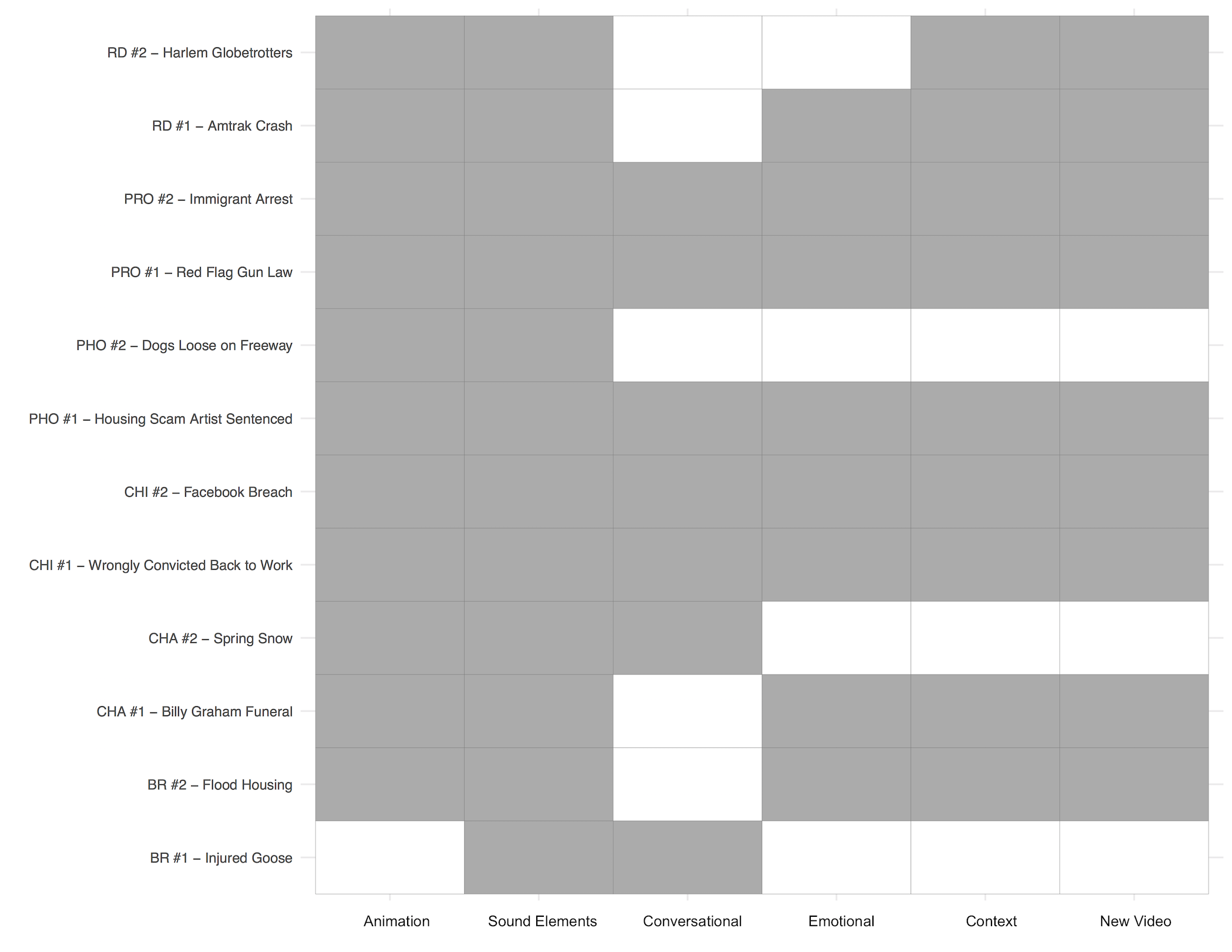
Figure 1. Attributes across remixed news videos. KEY:BR=Baton Rouge, CHA=Charlotte, CHI=Chicago, PHO=Phoenix, PRO=Providence, RD=Raleigh/Durham
The outcomes for the hard news subset, taken together, provide very substantial evidence that innovative approaches to hard news storytelling can yield meaningful results for audiences, on the most important kinds of stories for the civic health of communities. The results suggest that the most substantive news stories can be imbued with innovative qualities that make them more visually compelling and interesting while also giving the stories more depth and context. Further, audiences may be then more likely to trust and recommend the station from which the story comes, as well as more likely to engage with the news content, taking actions such as sharing the story on social media or recommending the source to a friend.
Storytelling breakdown: Original vs. Remix
In this section, we will dissect two of the remixed hard news stories that scored well with the audience. Excerpts from many of these test segments, both original and remix, can be found in the accompanying explanatory video to this report. (For a detailed breakdown of our video testing methods see Section IV.)
We tested the new version of the Chicago Facebook breach story in all six markets and it resonated with respondents as more appealing and a refreshing change from the original story. The original Facebook story is one-minute and thirteen seconds in length. One person is interviewed for the story, the attorney general of Illinois. The video of the story includes shots of people using Facebook as well as nine seconds of graphics. The remixed version is two-minutes long, longer than the original, but still a reasonable length for a traditional local TV news format. While the remix includes some of the interview with the attorney general, we decided to interview two Facebook users to help personalize the story.
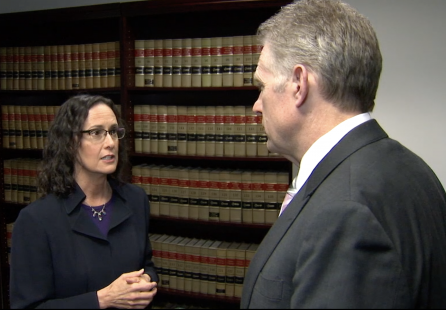
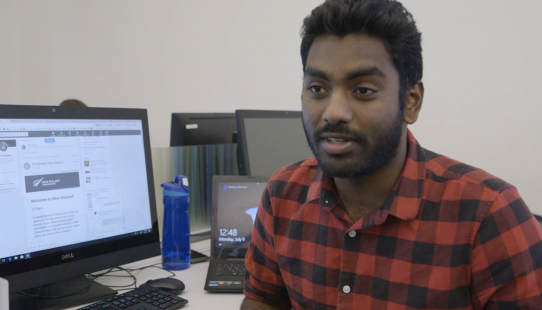
Figure 2: Screen captures from the Chicago Facebook story.
We also attempted to give the story a more modern feel by using animation and sound elements. The animation makes up 46 seconds of the story, five times more non-video content than the original.


Figure 3: Screen captures from the Chicago Facebook story.
We attempted to write the story in a more informal, conversational way while also providing more context about the Facebook breach and how it happened.
Our survey of respondents around the country revealed what people liked about the remixed version of the story:
“It seemed more immersive. I liked the visuals better because it didn’t feel like the same old boring news format.
“Better animations, more interviews, suspenseful and felt very personal to you.”
“Graphics helped explain the story. Graphics are visually appealing.”
“It had more context. It went a little bit more in-depth about the facts.”
Check out the two versions of the story for yourself:
Original Story
Remixed Story
We saw similar positive results in Charlotte where respondents found our new version of the story about Billy Graham’s funeral well-crafted, a refreshing change, and the kind of news story they would subscribe to.
The original Billy Graham funeral story is one-minute and 37 seconds long while the remix is two-minutes and 26 seconds long. This additional time allowed us to bring in more context about Graham’s life and death. While the original story focused on the funeral itself and exclusively featured video from the service, our remix combined the funeral video and archival footage, including historical interviews with Graham, to spotlight some notable times throughout his life and career.
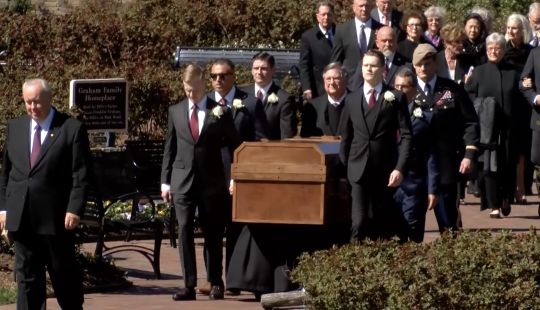
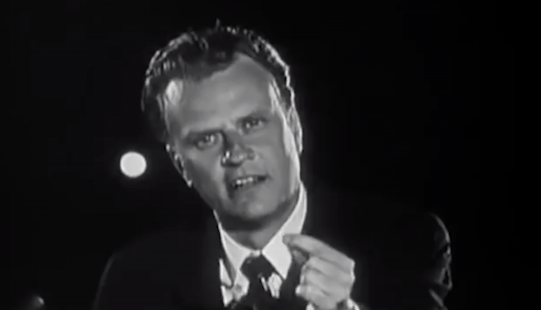
Figure 4: Screen captures from the Billy Graham funeral story.
To help illustrate the impact of Graham’s life over many decades and give the story an edgier feel, we used a 50-second animated timeline with sound elements to highlight five significant periods for Graham, including controversial remarks he made in 1993 about AIDS being a “punishment” for homosexuality, something he apologized for a few weeks later.
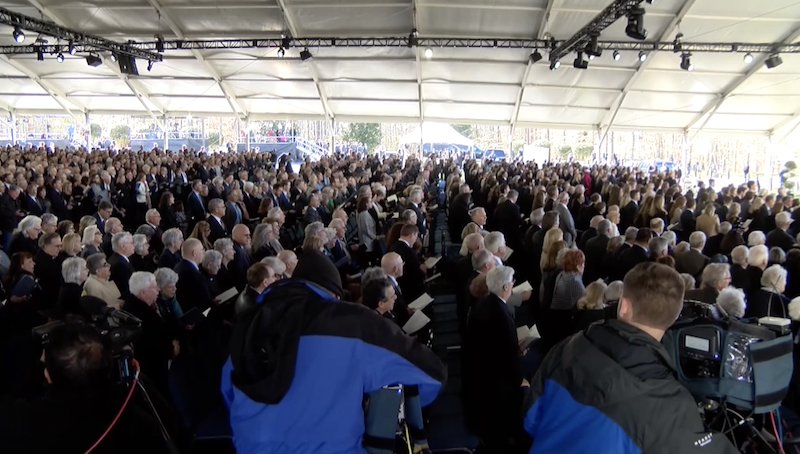
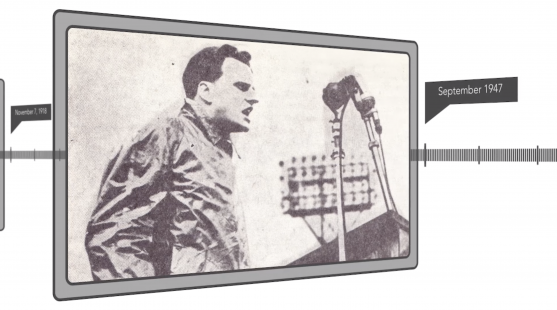
Figure 5: Screen captures from the Billy Graham funeral story.
Once again, respondents to our survey explained why they valued the remixed version of the story over the original:
“The historic timeline using archived video gave this version more depth.”
“Delivered more facts and was more emotional. It kept me more interested in the story.”
“The timeline with some of his important achievements was great and fascinating.”
Watch both versions of the Billy Graham funeral story:
Original Story
Remixed Story
In Section IV. and in this report’s Appendix, we include statistical information about how precisely these remixed videos performed relative to the originally aired broadcast segments.
You can also watch the original and remixed versions of the story about the Amtrak Crash here:
Original Story
Remixed Story
Takeaways for Local TV Newsrooms
Local television newsrooms can — and must — do better both on-air and online. Technology is giving consumers more sources and more options for getting their news, many of them right at their fingertips.
The industry cannot expect to alter viewing habits or attract larger audiences if they are essentially producing the same content on-air that they have for decades and are giving little more than cursory attention to how their product is presented online through websites, apps, and social media.
Digital content is regularly a cut-and-paste of the traditional broadcast story or a sensational, non-relevant story aimed at amassing web clicks rather than informing the local audience. The on-air broadcasts also lack innovation. Channel-surf between competing newscasts at 6 p.m. in any television market in the country and you will likely find the same stories told largely the same way.
So what can local television news journalists do? Plenty.
But first we must acknowledge all the people who work in local TV newsrooms across the country, both in front of the camera and behind-the-scenes, who do attempt to tell high-quality, creative stories whenever they can.
And a concession: our remixed stories should not be considered the gold-standard in storytelling. We know they are not perfect. But instead our experiments should be viewed as a roadmap for what’s possible when people try to do things differently. We changed things up, and in many cases, those changes resonated. Just imagine the possibilities when the best in the business band together — with cutting edge technology and greater resources — and focus on truly innovative storytelling.
- Take real risks. In other words, try something that’s truly new. The industry is risk-averse and changes that newsrooms do make are often recycled “tricks” from years ago.
- Break the production mold. Consider using graphics, animation, and sound elements in hard news stories in unique, different ways.
- Hire an animator. Yes, newsrooms have graphic designers, but animators can bring a different skillset to the production.
- Infuse historical video to convey the whole story. Identify stories that have a contextual history and utilize that information and video in the storytelling whenever possible. Newsrooms are sitting on years of historical video that can lend itself to stronger, more compelling stories.
- Hire Millennial and Gen Z journalists and involve them in all aspects of your newsroom. This is the audience of the future and they understand the sensibilities of digitally native news video and the issues their generations care about.
- Tell relevant, innovative stories. Quality journalism about meaningful topics is key, and so is creative storytelling that highlights the emotional impact.
- Present your story in an authentic way. 78 percent of news viewers we surveyed said authenticity in local TV news is important to them.
- Achieve newsroom “buy-in” at all levels. Local TV news is collaborative and truly innovative storytelling requires participation from people in all aspects of the production.
Section III.
Audience Attitudes toward TV
The panel surveys conducted across six American media markets surfaced important insights into the preferences and evolving expectations of television news audiences. While not a randomized, representative national sample, the survey responses nevertheless together provide sharp, detailed pictures of news consumers in diverse markets.
Panelists were drawn from Baton Rouge, La., Charlotte, N.C., Chicago, IL., Phoenix, Ariz., Providence, R.I., and Raleigh-Durham, N.C. As mentioned, roughly 100 persons ages 18-49 were recruited in each of the six target markets. These persons were selected through a stratified approach to match the underlying Census demographics of the six markets.
The respondent pool was: 56% female, 44% male; 69% White, 20% African-American, 10% Latino, and 5% Asian-American; 34% identified as Democrats, 27% as Republicans, 25% as independent or libertarian, and 9% undecided. The average age was 34.4 years old, with roughly half ages 18-34 and the other ages 35-49. In terms of income, 60% of panelists earned below $75,000 annually. About half had not graduated from college. (See Section IV. Research Methods.)
Trust, truth and accuracy among most important qualities of news sources
Of the 613 persons surveyed, 88% said that being a trusted source was important or extremely important. More than 70% ranked the following qualities as important or extremely important in the news and information sources they rely on: factual and accurate, delivers the latest in breaking news, provides unbiased coverage, is up-to-date, authentic, understands the local area, and delivers investigative reports that uncover important news stories.
Among those qualities that ranked lowest in importance were sources that shared viewers’ values and beliefs; allowed people to comments and interact with others; and used humor and satire to cover important news.
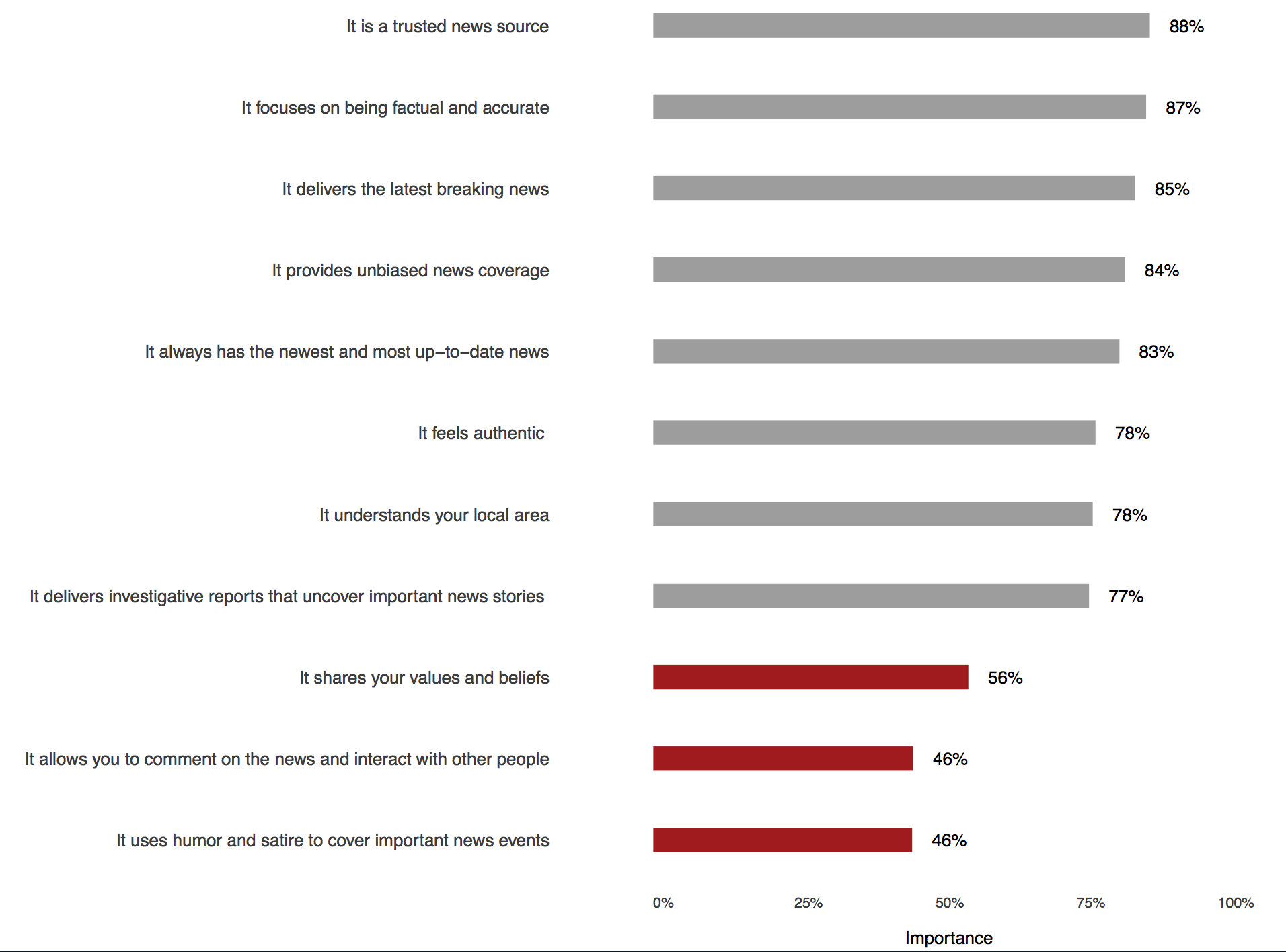
Figure 6: Trust, truth and accuracy rank among the important qualities of news sources.
The importance of authenticity, trust and comfort
Asked to rank certain qualities as strengths or weaknesses of local news programs on TV, respondents consistently ranked high the importance of authenticity of, trust in, and comfort with local TV news sources.
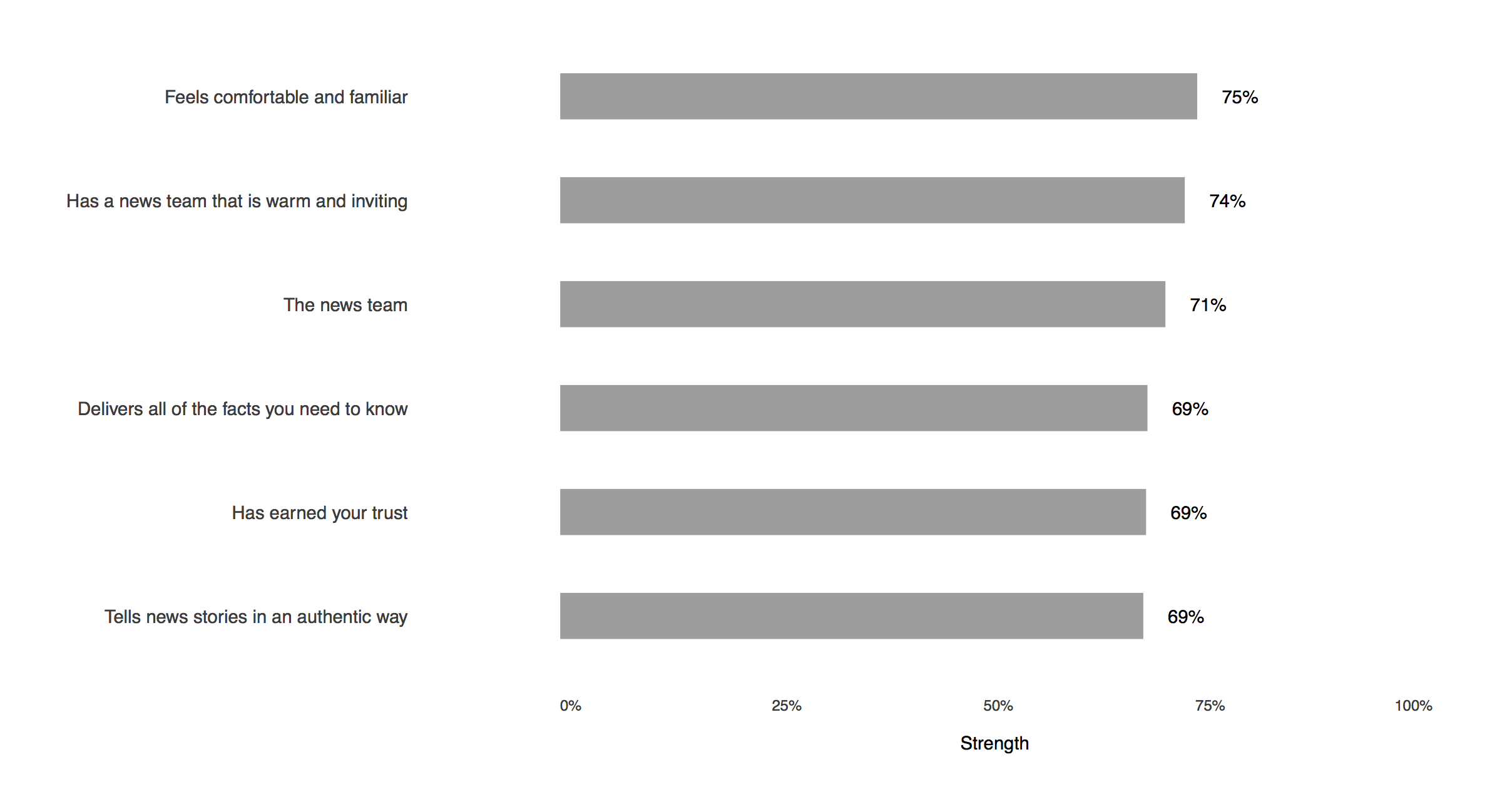
Figure 7: The importance of qualities like authenticity, trust and comfort in local TV news.
Breaking, comprehensive and investigative news focused on important, community stories among top reasons people watch TV news
Asked about the factors that go into their decision to watch local TV news, respondents ranked the following reasons as either one of the most important or the single most important:
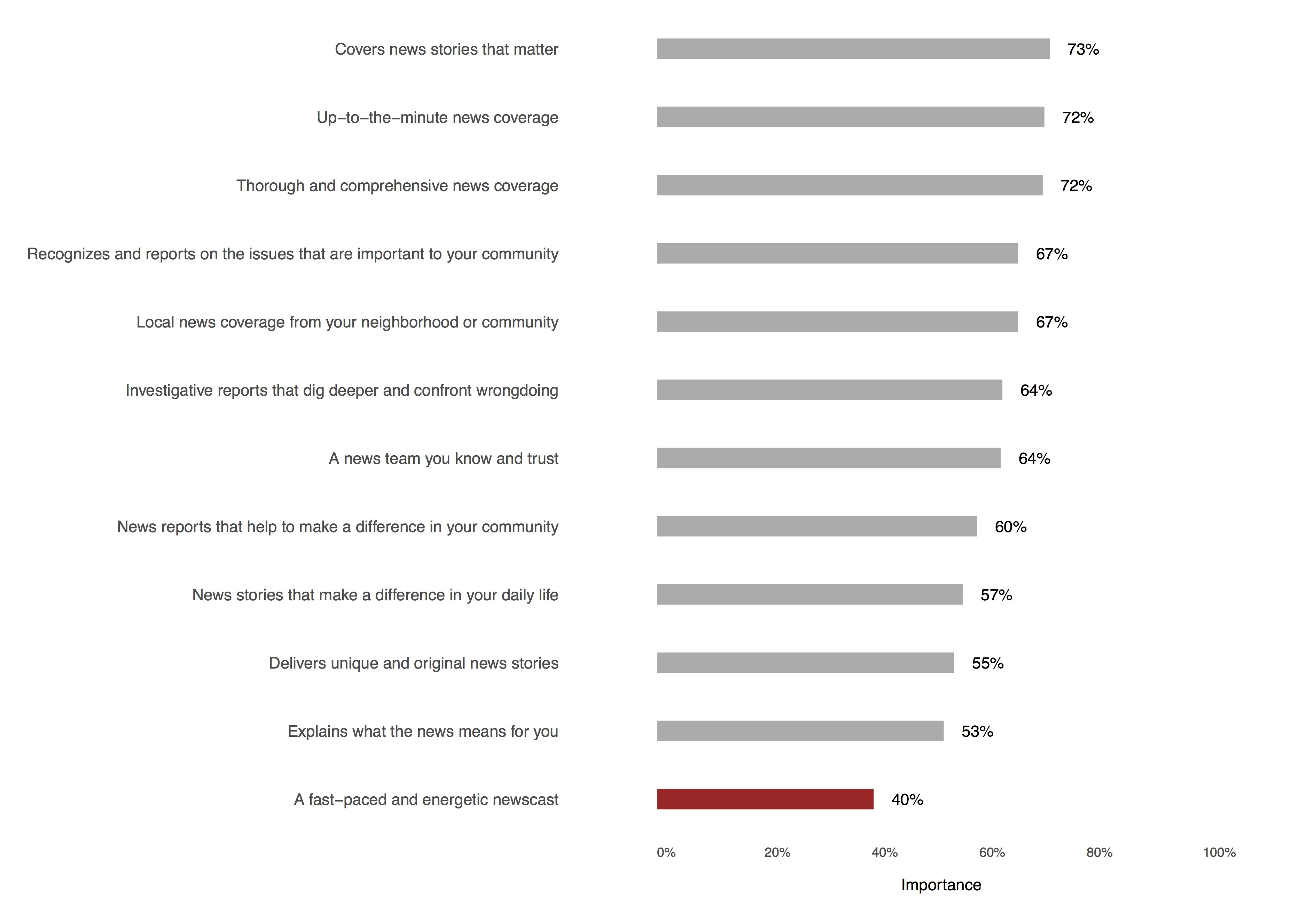
Figure 8: Factors that go into the decision to watch local TV news.
Far down on the list, the importance of a fast-paced and energetic newscast. This finding fights a common practice in the local TV news industry which regularly pushes for high story counts and shorter stories for newscasts. Most viewers surveyed do not agree.
Respondents rank depth over efficiency in local TV news
The conventional wisdom is that news consumers want increasingly short, quickly digestible content. While this may be true in some contexts, our panel survey respondents offered a more complex picture of audience preferences on the spectrum of efficiency to depth. Indeed, asked to describe what their ideal local news program would look like, respondents fairly consistently chose depth over efficiency.
Viewer preferences on efficiency versus depth on aspects of TV news programs
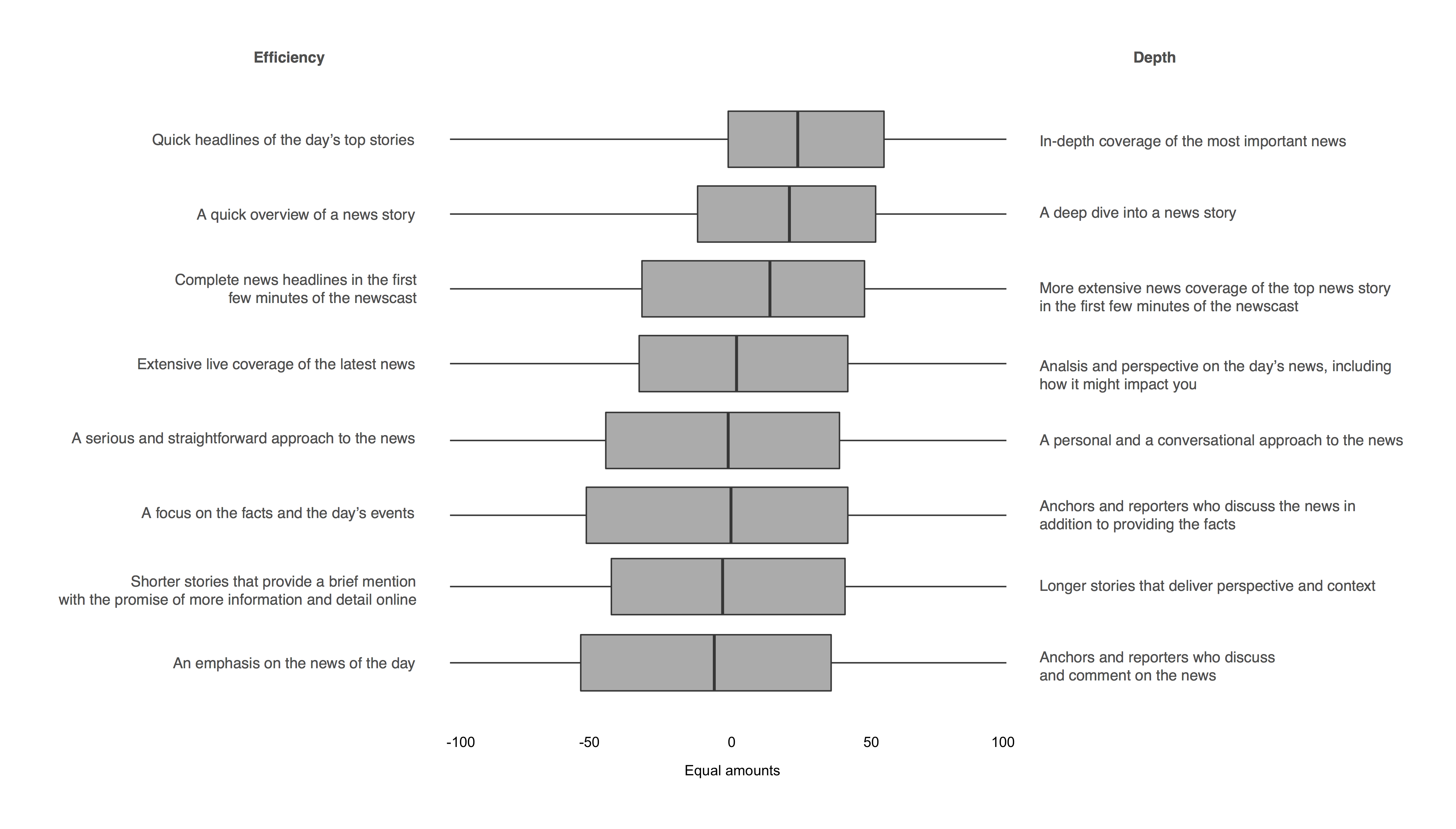
Figure 9: Viewer preferences on efficiency versus depth on aspects of TV news programs.
Finally, we asked panel respondents how much certain key concepts and descriptive phrases apply to the local TV news that they consume. The following words and phrases describing the news stories and reports seen on local news today were ranked by respondents. (Darker patterns of dots indicate heavy clusters of responses; light patterns indicate relatively few responses falling on that end of the spectrum.)
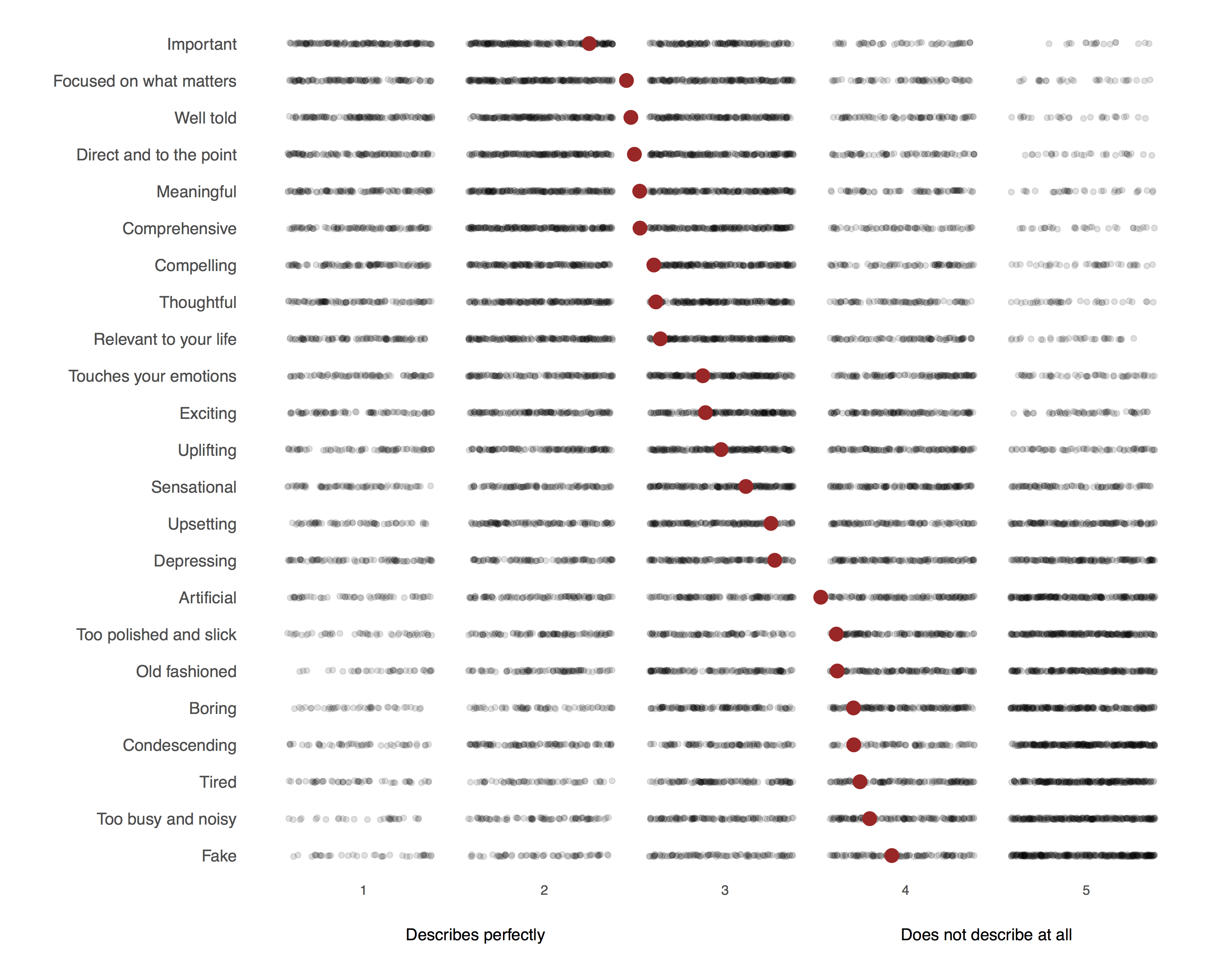
Figure 10: Descriptions of local TV news.
Qualitative responses: attitudes towards local TV news programs very positive
Respondents were asked “What comes to mind when you think about local news programs on TV?” The responses were overwhelmingly positive, with the most popular adjectives being “good, informative, accurate, relevant, friendly” and “unbiased.”

Figure 11: A word cloud of attitudes towards local TV news programs
What respondents like and dislike about local TV news
That is not to say respondents did not have criticisms of local TV news broadcasts. The two figures below show top words, weighted by proportion, used by respondents to describe what they liked most and least about local news programs on TV.
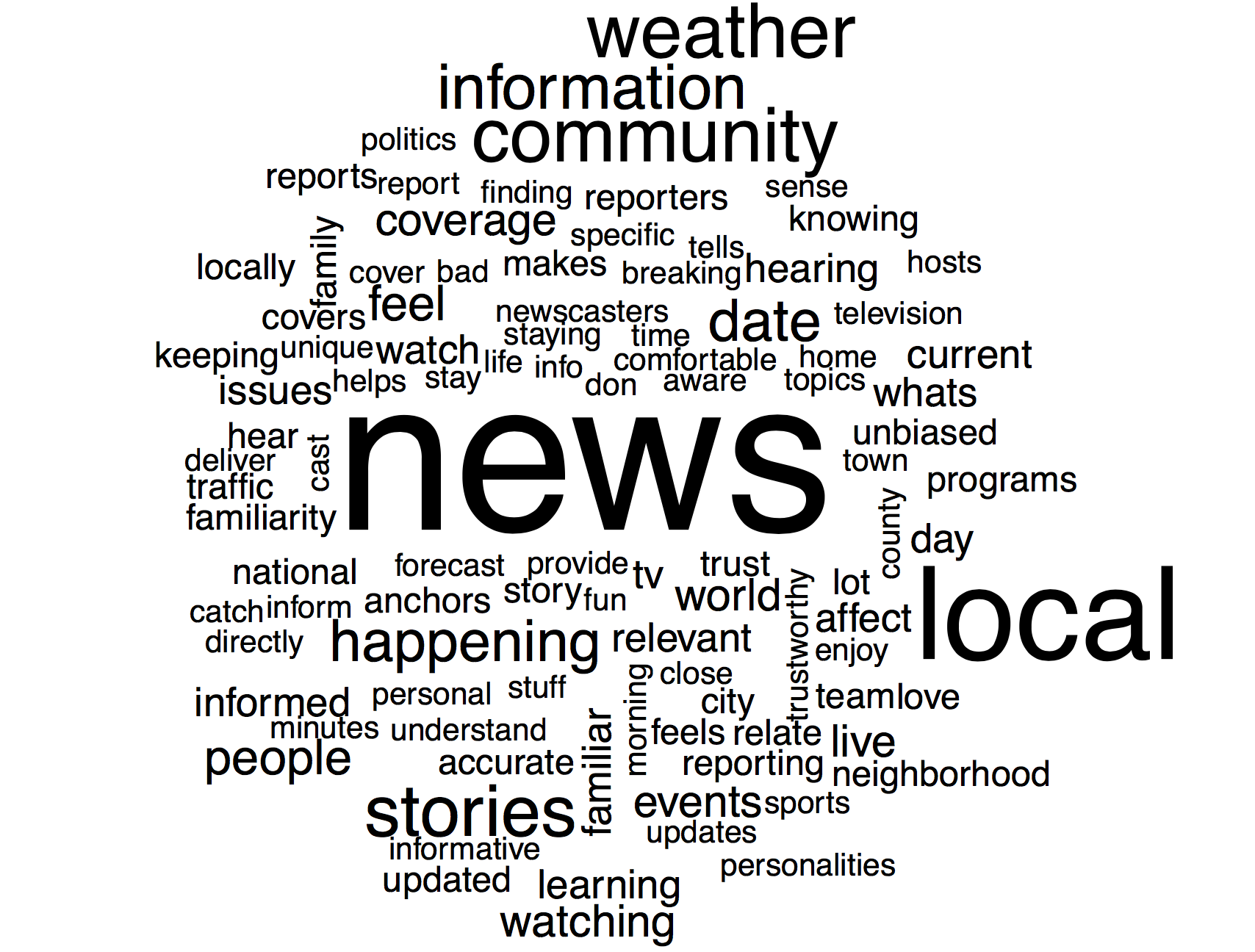

Figure 12: Top words, weighted by proportion, used by respondents to describe what they liked most (top) and least (bottom) about local news programs on TV.
Write-in responses from survey panelists contained a fair amount of diversity in terms of what they did not like about local TV news. A few representative answers were: “Shows too much negativity and not enough good”; and “Sometimes they seem to make things more dramatic for attention.”
Section IV.
Research Methods
Six local television stations agreed to allow the Northeastern research team to test video stories that had already aired against newly remixed versions created by the researchers. No payment was exchanged with the stations, although the researchers agreed to share the testing data upon completion. The stations provided researchers with video files of stories from 2018 that the stations themselves — not the researchers — chose as examples of quality storytelling. As mentioned previously, stations were in the following markets: Baton Rouge, La., Charlotte, N.C., Chicago, IL., Phoenix, Ariz., Providence, R.I., Raleigh-Durham, N.C. The researchers did select among the 10 or so stories that each station furnished as potential material for remixing.
Northeastern partnered with the national audience research firm SmithGeiger, a widely respected consultancy that does research for the television news industry. We worked extensively with Dr. Seth Geiger, a communication researcher, to develop a strategy that would allow efficient and accurate testing of experimental videos in six markets. The research team at Northeastern developed the survey instrument and all of the video content to test; the survey, with embedded video tests, was then conducted by SmithGeiger in September 2018
The testing phase involved surveying roughly 100 persons ages 18-49 in each of the six target markets, resulting in 646 total completed surveys. These persons were recruited from a diverse set of panel providers with which SmithGeiger has a long-standing relationship; respondents were selected through a stratified approach to match the underlying Census demographics of the six markets. Respondents were paid the equivalent of a nominal fee ($5-$7) as part of their ongoing participation in panel work. The survey, which was 45 minutes in length, involved a number of general questions relating to evaluations of local TV news in addition to watching two competing versions of three different videos
We removed 33 persons to control for any irregularities such as straight-lining patterns in responses or bulk incomplete responses. The final overall sample of N=613 respondents had, as mentioned previously, the following characteristics: 56% female, 44% male; 69% White, 20% African-American, 10% Latino, and 5% Asian-American; 34% identified as Democrats, 27% as Republicans, 25% as independent or libertarian, and 9% undecided. The average age was 34.4 years old, with roughly half ages 18-34 and the other ages 35-49. In terms of income, 60% of panelists earned below $75,000 annually. About half had not graduated from college.
Where we chose to perform statistical tests for significance relating to the experimental video testing, we weighted up males in Baton Rouge in order to keep the proportion of males to females consistent in all markets, making the new sample total N=635. For all frequencies in this report relating to survey questions about panelists’ general views on local TV news, we left the sample unweighted (N=613).
Video testing results
Altogether, we remixed and tested 12 different videos — two for each market. We also showed a video from the Chicago market relating to Facebook’s data privacy troubles to panelists in all markets, so responses to that video could be compared for the full sample (N=635). Otherwise, each market panel was comprised of roughly 100 persons who together matched the Census population characteristics of that market.
The testing videos specific to each market were embedded in the survey. The order in which they appeared to panel respondents was randomized. After watching the videos, respondents were asked a series of questions about the content that they saw.
The core of our analysis compared a subset of the videos, looking particularly at those that could be deemed “hard news.” We used an analysis of variance, ANOVA, statistical test to examine the seven videos in this subset (N=635). For the entire hard news set, we saw positive significance in terms of viewers preferring the remixed video, versus the one originally aired, across four key measures: Viewers rating of “Interesting” was strongly significant (p<.002) in favor of the remix; likewise, for “Visual Appeal” we saw significance (p<.041) for the remix; for an aggregate variable we called “Visual Index” we saw significance (p<.015) again for the remix; and for another aggregate variable we called “Affinity Index” we also saw significance (p<.042) in terms of viewers preferring the remix.
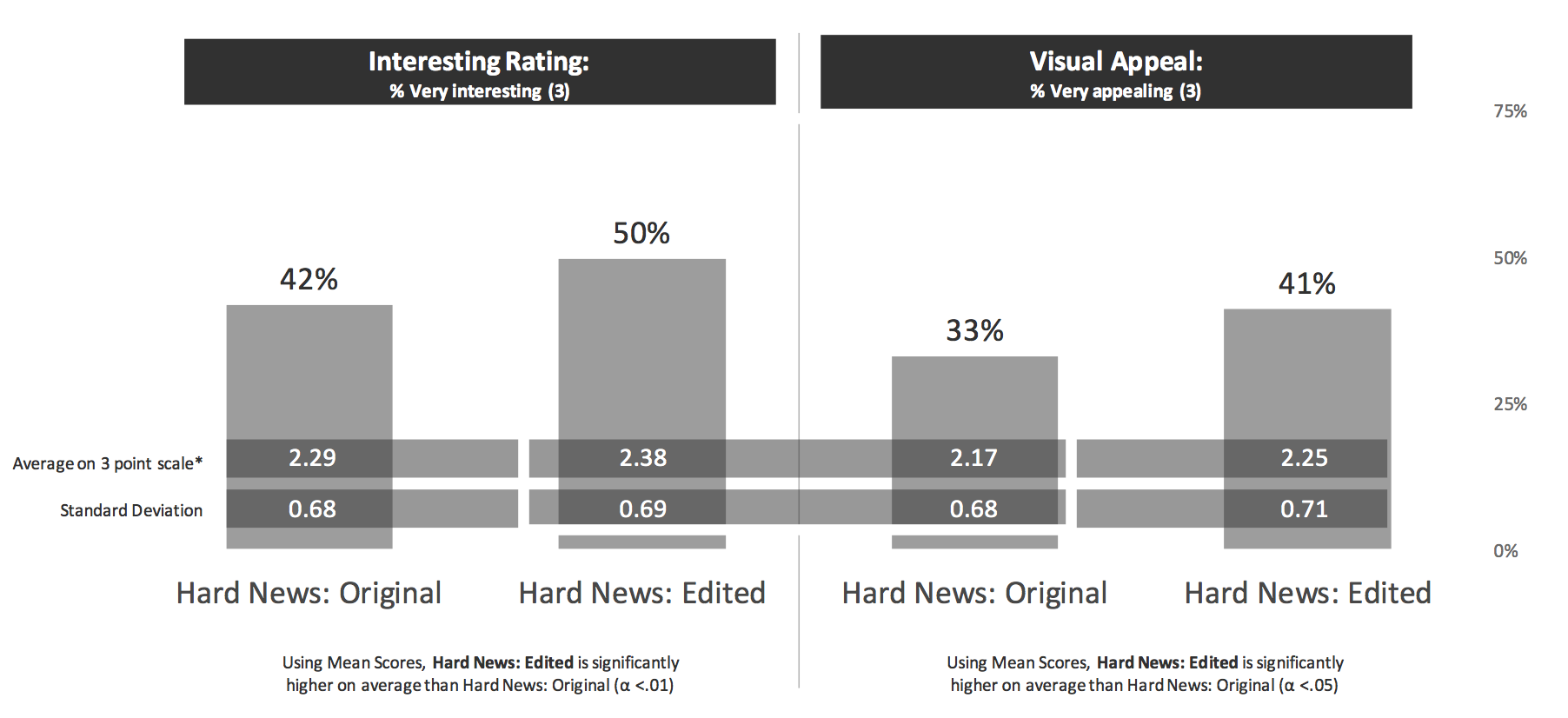
Figure 13: Audience preferences for remixed videos versus originally aired stories on degree of interestingness and visual appeal (results aggregated across all seven hard news stories.)
We also tested this dataset to see if certain respondent-related independent variables might show strong interactions with video type (remix versus original) and thus explain variation in preferences. However, the overall findings of statistical significance relating to viewer preferences were general and not specific to any particular respondent demographics or characteristics, such as age cohort, the frequency of viewing local TV news, or loyalty to particular news stations.
The Visual Index variable was created by combining responses on seven interrelated measures, which respondents rated on a five-point scale: well-crafted; a refreshing change; memorable; urgent and immediate; changes your perception of local news; authentic; clear and easy to understand. The Affinity Index variable captured responses indicating a likelihood of following on social media and sharing the story in question; making a point of watching; recommending the station from which a story comes; or trusting the station.
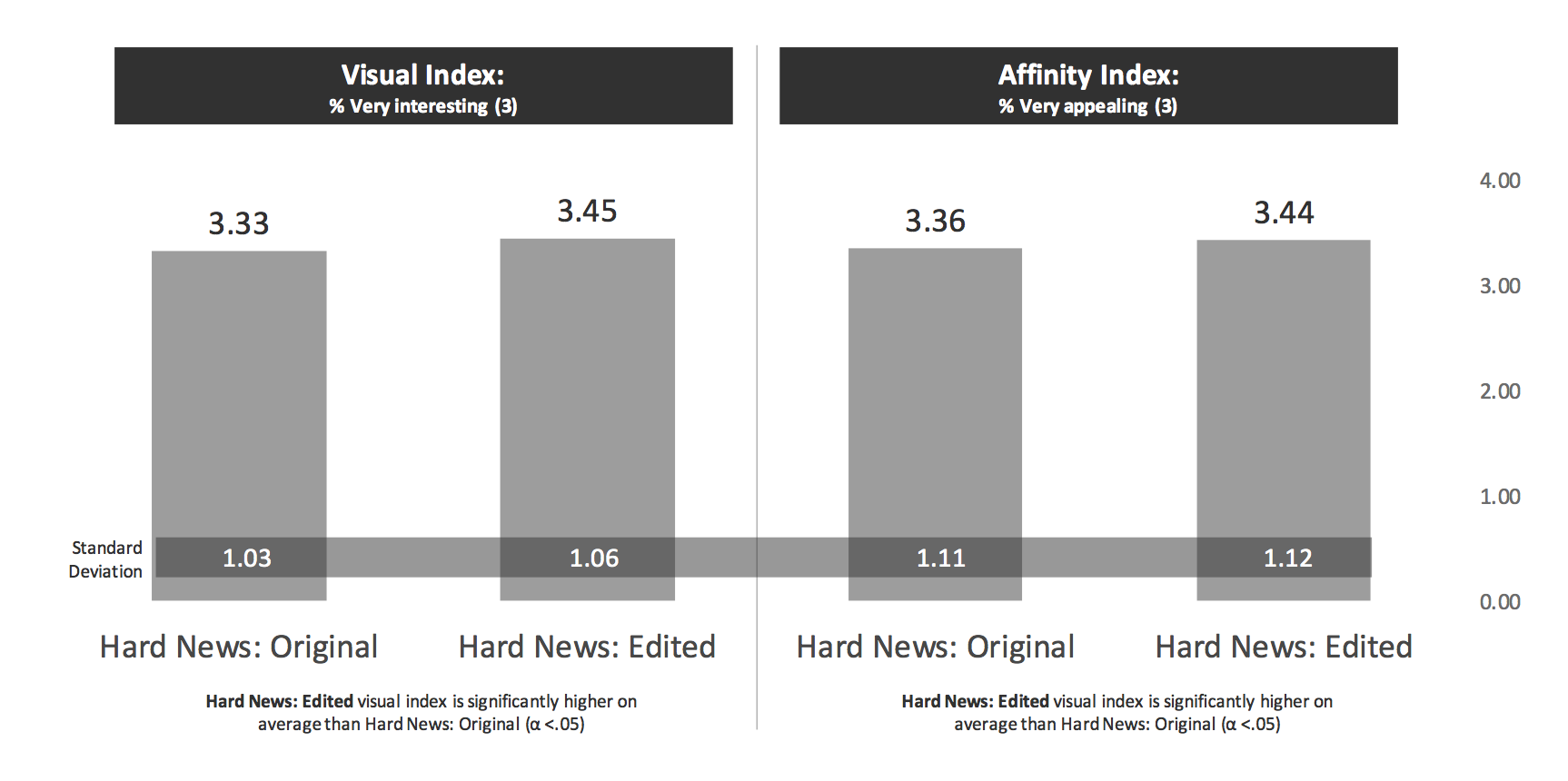
Figure 14: Audience preferences for the remixed videos versus the originally aired stories on aggregated variables for tone and visual qualities (“Visual Index”) and for engagement measures (“Affinity Index.”)
For soft news stories, innovative storytelling techniques generally did not influence the preference of viewers, and the originally aired story often outperformed the remix at a statistically significant level. This suggests that stations may have largely perfected and optimized the format for stories that convey more light-hearted human interest, animal-related, or funny/entertaining content
As mentioned, however, the outcomes for the hard news subset, taken together, were different. They genuinely performed better at a statistically significant level. Panel respondents indicated that they were more likely to trust and recommend the station from which the story comes, as well as more likely to engage with the news content, taking actions such as sharing the story on social media or recommending the source to a friend.
Finally, we also ran t-tests for individual hard news videos, which yielded some noteworthy results, where viewer preferences for the remix over the original were significant. For the Charlotte-Billy Graham story, the variable “Interesting” was positive at a significant level (p<.041) for the remix versus the original. For the Chicago-Facebook breach story, the variable “Interesting” was positive at a significant level (p<.036) for the remix versus the original. It also saw significance for “Visually Appealing” in terms of audience preference for the remix (p<.032). For the Providence-Calderon story, the variable “Interesting” was positive at a significant level (p<.041) for the remix versus the original. For the Raleigh-Durham Amtrak story, the variable “Visually Appealing” was positive at a significant level (p<.018) for the remix versus the original.
The Appendix to this report has figures showing a detailed breakdown of how versions of the videos performed across various experiments.
Section V.
Conclusion: Paths Forward
We hope these findings are part of an ongoing conversation. Further experimentation and research are vital in this era of rapid change and media transformation. Younger, more diverse audiences that are not currently accessing local television news are forming their expectations and habits with regard to video amid a swirl of new media options. It will be increasingly difficult to reach these potential audiences if local television news outlets do not keep a careful eye on cultural changes and shifts across the wider media ecosystem.
The research itself, we believe, is an important step in trying to figure out the challenging game of triangulation that traditional broadcasters now need to play, balancing a commitment to strong local storytelling that can orient communities with new sensibilities and audience tastes influenced by a dizzying array of creative outlets and user-generated platforms.
To recap our central findings, we identified significant signs of increased audience engagement on hard news stories that had been remixed to include some of the following attributes: animation, sound elements, a more conversational style, higher emotional impact, more context, and new video and sound. We did this after partnering with six television stations around the country that shared their video content with us; we then used an audience research firm to test the original versions of the stories against the new remixed versions in each of their respective markets. In a nutshell, we tried something different. And it worked, at least for hard news. Our treatment on soft news did not work, and indeed audiences often preferred the status quo. This suggests that the real opportunity for innovative storytelling relates to hard news.
Our project here, of course, has limitations: The panelists are not a nationally representative probability sample; and the way we remixed videos can certainly be improved upon with further research and experimentation. Researchers and practitioners looking to innovate in this space might pursue several logical extensions of the work presented here. First, we believe that the mobile/smartphone small screen format should be examined more intensively in terms of the storytelling and production values that are most likely to succeed. Second, the use of animation has a great deal of promise, and yet it is used sparingly and often in “cheesy” or simplistic fashion in current local television news practice. These are but a few of the variables that need to be explored more thoroughly if local television producers are to update their practice in an informed fashion.
Many media observers have long been advocating for change in the industry, although to date much of this advice has been ignored. American Press Institute Executive Director Tom Rosenstiel, who co-authored the 2007 research-informed manifesto for change We Interrupt This Newscast, believes the need for reform in local television practice is even more critical now as audiences become more fragmented in the digital age. “We’re now in an environment where people don’t have to watch local television for the weather, [and] they are probably not watching an entertainment lead-in on a station that has local news,” Rosenstiel told us. “We now know that Millennials are much much less likely to ever encounter broadcast television.”
Yet Millennials and Gen Z cannot be ignored. In fact, they should be embraced and targeted. They are the news consumers who will ultimately decide if local TV news will continue to be a trusted source of news and information in the decades to come. The same old way of doing things is not a recipe for success. Television stations should concentrate on creative, quality storytelling on multiple platforms while researchers should continue to experiment with unique storytelling methods that break the traditional mold.
The televisions that nearly everyone is carrying around in his or her pocket — the smartphone — must be a priority for both the industry and researchers as they focus on developing compelling video content that is available on demand. The time for newsroom backslapping over amassing high volumes of web clicks for posting irrelevant, sensational stories must end. Our research shows that audiences want and appreciate in-depth content, so the industry must provide it, both on-air and online, in order to build credibility with the next generations. We believe local news operations should collaborate more with university researchers as both try to navigate the evolving media landscape and the changing habits of consumers.
This is not a challenge anyone is going to solve overnight, but it is a discussion that needs to happen. Innovation in local TV — or the lack of it in the coming years — could have huge consequences not only for the industry, but also for citizens and their ability to be better educated about news that matters in their communities.
Acknowledgments:
For their terrific creativity and contributions, we would like to thank Northeastern students Niyah Gonzalez, Zach Ben-Amots, Andy Robinson, Felippe Rodrigues, Danae Bucci, Brooks Sutherland, Alejandro Serrano, Cole Albert, Will Bryan, Patrick Strohecker, Kimberly Mehrtens, Shraddha Kakade, Veer Mudambi, Yuan Tian, Olivia Whitaker, Joseph Annis, and Rachel Grozanick.
For their tremendous help with preparing, fielding, and analyzing the survey, our gratitude goes to Seth Geiger and Gilbert Quinonez at SmithGeiger. At Northeastern, we would like to thank the following for their important research contributions: Aleszu Bajak for data analysis; Daniel Bruzzese for animation; and Zach Ben-Amots, Michelle Carr, Andy Robnsion, and Amber Yang for video production and editing. We would also like to thank Susan Conover, Tammi Westgate, and Katherine Calzada for their vital work in helping us administer this project.
Various debts are owed to our project advisory group, which included: Karen Agresti, EVP, Director of Local Integrated Investments, Trilia Hill Holliday; Aleszu Bajak, Storybench.org Editor and Lecturer, Northeastern University; Callie Crossley, Host, WGBH; Bob Crowley, Senior Photographer, CNN; Marsha Della-Giustina, Professor, Emerson College; Bill Fine, President and General Manager, WCVB-TV; Andrew Heyward, MIT Media Lab, former CBS News President; Dan Lothian, President, Little Park Media, former CNN Correspondent; Linda Miele, News Director, WHDH-TV; Mike Oliveira, News Director, WSOC-TV; Bob Schieffer, CBS News Political Contributor, former Face the Nation Host; Alan Schroeder, Professor, Northeastern University; Maria Stephanos, Anchor, WCVB-TV.
We could not have done this project without our partner stations: WLS in Chicago, KNXV in Phoenix, WBTV in Charlotte, WTVD in Raleigh/Durham, WJAR in Providence, and WAFB in Baton Rouge.
We would also like to thank Liz Allison and Laurie Slap at the Stanton Foundation for their wonderful support of this project in all of its phases. The pioneering research work of Dr. Frank Stanton, longtime president of CBS, has continued to provide inspiration for our own work.
Appendix
Detailed information about panel participants in all six markets and the experimental treatments that we performed are contained in these accompanying slides. For researchers or practitioners looking to build upon the data, please send inquiries to [email protected] and [email protected].
Endnotes
[i] Knight Foundation. (2018). The State of the Industry: Local TV News and the New Media Landscape, https://knightfoundation.org/reports/local-tv-news-and-the-new-media-landscape
[ii] Patterson, T.E. (2008). Young people flee from the news, whatever the source, Television Quarterly, http://www.tvquarterly.com/tvq_38_2/media/articles/06_young_people_flee.pdf
[iii] Matsa, K.E.(2018, January 5.). “Fewer Americans rely on TV news; what type they watch varies by who they are,” Pew Research Center. http://www.pewresearch.org/fact-tank/2018/01/05/fewer-americans-rely-on-tv-news-what-type-they-watch-varies-by-who-they-are/
[iv] Rosenstiel, T., Just, M., Belt, T.L., Pertilla, A., Dean, W. & Chinni, D. (2007). We interrupt this Newscast: How to improve local news and win ratings, too. (New York: Cambridge University Press), https://doi.org/10.1080/10584600801985755
[v] See, for example: Morrison, S., & Carlson, E. (2018, April 18). “Reinventing local TV news,” Nieman Reports, https://niemanreports.org/articles/reinventing-local-tv-news/
; Beaudet, M., & Wihbey, J. (n.d.). Reinventing local TV News Project, Storybench, http://www.storybench.org/category/tvnews/
; Heyward, A. (2019, January 17). “KUSA’s Next With Kyle Clark is a “refreshing” example of innovation’s risks — and rewards,” Knight-Cronkite News Lab, https://cronkitenewslab.com/broadcast/2019/01/17/kusas-next-with-kyle-clark-is-a-refreshing-example-of-innovations-risks-and-rewards/
[vi] Hard news has been defined as coverage of major issues, significant disruptions in the routines of daily life, and coverage of breaking events involving top leaders. By contrast, soft news is “typically more sensational, more personality-centered, less time-bound, more practical, and more incident-based than other news.” See: Patterson, T.E. (2000). Doing Well and Doing Good: How Soft News and Critical Journalism Are Shrinking the News Audience and Weakening Democracy and What News Outlets Can Do about It. Harvard Kennedy School, Shorenstein Center on Media, Politics and Public Policy, https://shorensteincenter.org/how-soft-news-critical-journalism-are-shrinking-news-audience/

